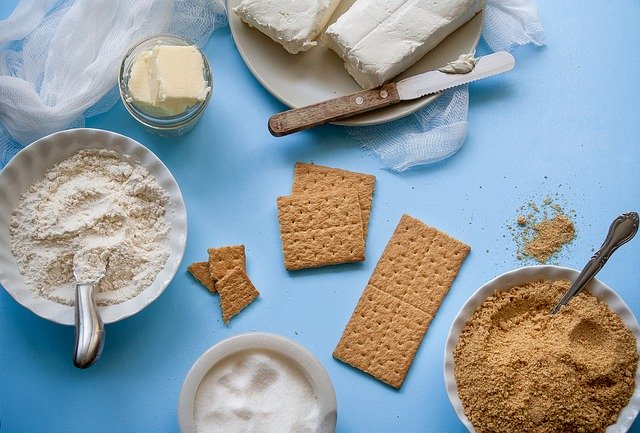Today I am going to explain 10 Baking Tips and Tricks to assist you with creating better-baked gains on a regular basis for baking cakes, cookies, cupcakes, pastries.
Let's be honest. The most tried baking plans can even now slump every so often. It's generally a zenith of little issues, you may not know about, that indicate level oily cookies or a depressed cake catastrophe.
Here are a couple of my preferred tips for great Cake and cookie baking.
1. Always Have the Correct Butter Consistency
Butter is the beginning stage for a large measure of prepared products, so it's essential to have it prepared as the formula recommends. The temperature of butter can drastically change. Three distinct textures of butter that baking methods commonly summon for frozen, chilled, softened.
2. Always Have Ingredients Prepped
We should always Measure our ingredients before beginning a recipe. Peruse the ingredients, and get them arranged on your kitchen counter before baking. There's almost no space for blunder when you start planning like this you're not struggling and rushing during baking.
Also, abstain from making ingredients changes. Keep in mind, baking is science. Make the recipe as written first at that point on the off chance that you feel sure, make any ingredients replacements as you see right.
3. Most Important Learn How to Measure
Astounding baking requires exact proportions, described procedures, and very much tried plans. In contrast to cooking, you can't simply bake something by tossing a few ingredients together and eat that mostly you can't have that
Issues are usual if estimations are not right. Having a firm grip on evaluating procedures is basic. Measure dry ingredients in cups or spoons in light of the fact that these are exceptionally designed for dry ingredients. This is particularly important with flour. A formula calling for 1 cup of flour and cooked with at least 2 cups fairly without a doubt will bring you to fail your recipe.
4. Get an Oven Thermometer
always use an oven thermometer. place it in the focal point of your oven. Some dangle from the racks or can be set legitimately in the center of the oven. While practically, they're important in a baker's kitchen.
5. Room Temperature is KEY
Talking about temperature, if a formula calls for room temperature eggs or any dairy ingredients, for example, milk or yogurt, ensure you stick to this same pattern. Room temperature ingredients emulsify a lot easier into the batter, which makes a smooth to bake.
6. Cool Your Cookie Dough
Chilling Cookie dough in the cooler firms it up, reducing the chance of over-spreading. Chilling mixture guarantees a thicker, progressively strong cookie yet an improved flavor too. Not just this, cool cookie batter is a lot simpler to deal with and shape. In delicate chocolate chip cookies, for the situation, it helps builds up an uplifted rich, caramel-y season. In the wake of chilling, let your treat mixture sit at room temperature for around 10 minutes (or more, depending to what extent the batter has chilled) before folding into balls and preparing. Once in a while after refrigeration, cookies mixture can be too difficult to even consider rolling or handle.
7. Weigh Your Ingredients
A little kitchen scale is extremely valuable. It is, by a long shot, the most utilized device in my kitchen. A gram or ounce is constantly a gram or an ounce, however, a cup isn't constantly a cup. This is the reason I offer gram estimations with my plans. Once more, accuracy is everything.
8. Quality ingredients Most Needed
Various brands of butter, buttermilk, yogurt, and flour have fluctuated levels of dampness, protein, and fat. These little varieties can incredibly impact the result of the last item. Always use the brands the recipe creator suggests, or discover brands that suit your preparing needs and use them only so you know how they will respond in your formula.
9. Different ways to know your cake is ready
In the event that you don't have toothpicks or sticks close by, you'll realize your cake is completely prepared when the sides pull away from the dish, the cake is pillowy and bright on top, when you touch the top bobs back, as well as when the inward temp peruses 210 degrees F on a thermometer.
10. Understand your baking equivalents
- 3 teaspoons = 1 tablespoon
- 4 tablespoons = 1/4 cup.
- 5 tablespoons + 1 teaspoon = 1/3 cup
- 2 cups = 1 pint
- 2 pints = 1 quart
- 4 quarts = 1 gallon
I suggest you save this information to help you when you will create some awesome cake or cookies. And subscribe to Mineoff for some great upcoming ideas and entertainment.
Happy Baking.!!!!!!!!!



















0 comments:
Post a Comment
If Have any doubts Let Me Know